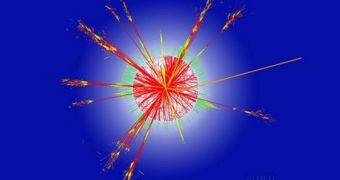As soon as physicists announced that they would open the Large Hadron Collider (LHC), critics jumped up saying that the machine will become capable of producing small black holes that could endanger our planet and civilization. While physicists have shown these rumors to be a complete fabrication, especially as far as the scale of devastation goes, it's important to clarify things. But first, people need to understand what a black hole actually is.
“The simplest black holes are objects with a singularity in the center and that are surrounded by an ‘event horizon.’ Once something comes closer to the black hole than the radius of the event horizon, it is not able to leave: even light can’t escape and so the name ‘black hole’ was given to these objects by John Archibald Wheeler back in 1967,” explains Oxford University Department of Physics professor Cigdem Issever. The expert explains that black holes appear when matter is squeezed, or compressed, beyond a threshold known as the Schwarzschild radius. This is the limit that, once exceeded, causes gravity to pull the mass in on itself, collapsing it, and triggering the formation of a black hole.
“In fact the size of the Schwarzschild radius is directly proportional to the amount of mass that is squeezed in, as well as being directly proportional to the strength of gravity. For example, in order to form a black hole out of our Earth, you would need to squeeze its mass into a sphere about the size of a marble (radius 8.9 mm). By comparison the Schwarzschild radius of the sun is about 3 [kilometers],” the expert adds in an interview with PhysOrg.
The professor explains that the diameter of the elementary particles used at the LHC would need to be compressed extensively to produce black holes. In fact, they would need to become 15 orders of magnitude smaller than the Planck limit, which basically sets the low limit for how small an object or a particle may be in this Universe. In other words, the quarks and gluons the Collider is operating would need to be 15 orders of magnitude smaller than possible in order for infinitely-small black holes to form.
“This means that, in conventional models of physics, there is no way a black hole could be produced in a collision of two partons. However, there are models on the market suggesting that the strength of gravity could become significantly larger at very small distances, up to 10 to the 38th [10 with 38 zeros] times stronger,” the expert adds. “If this is true then the Schwarzschild radius of two colliding partons becomes large enough that, at the LHC center-of-mass energy, two partons passing each other at their Schwarzschild radius is not so unlikely anymore. So, we may be able to produce microscopic black holes after all,” she concludes.

 14 DAY TRIAL //
14 DAY TRIAL //